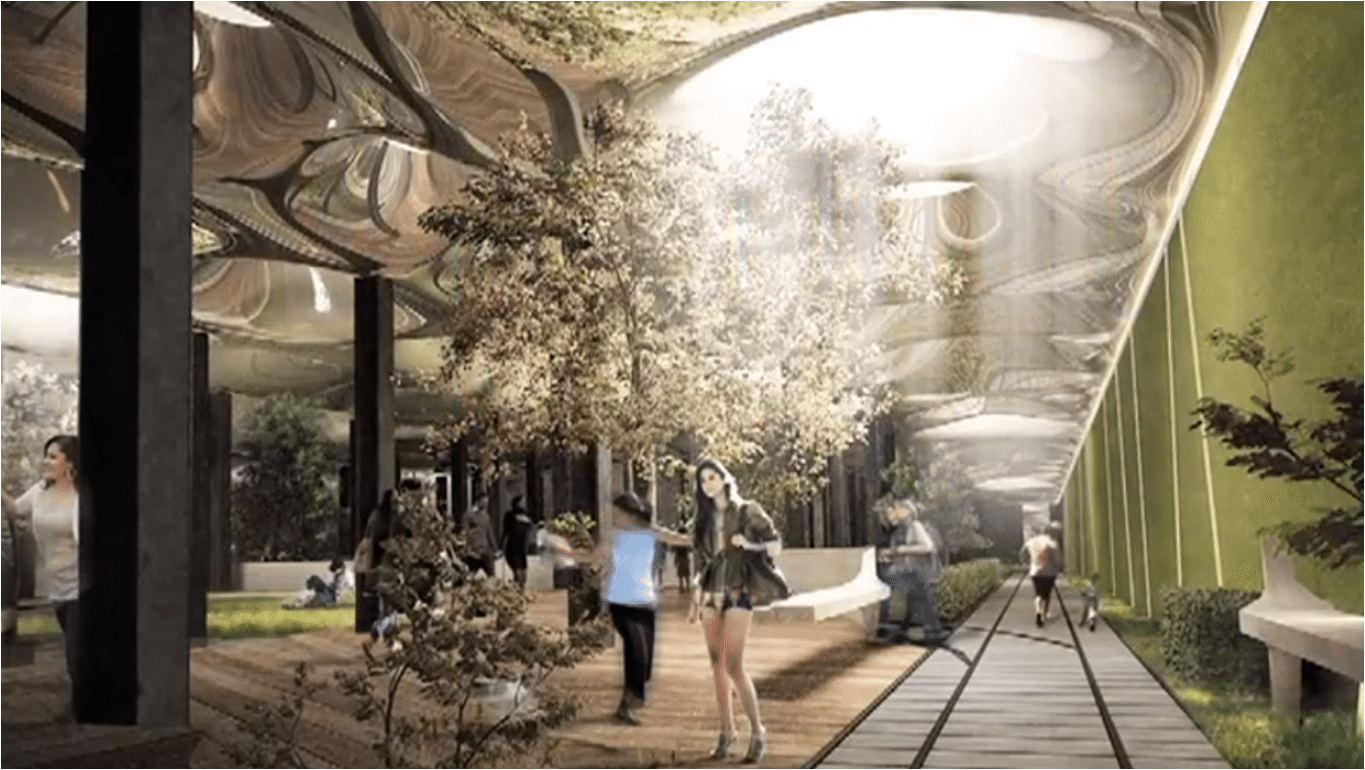Warning: Undefined array key "sharing_networks_networks_sorting" in /var/www/wp-content/plugins/monarch/monarch.php on line 3904
Warning: Trying to access array offset on value of type null in /var/www/wp-content/plugins/monarch/monarch.php on line 3904
On Delancy Street in Lower Manhattan, an exciting new project is being developed in a Williamsburg Bridge trolley terminal. Though long abandoned, the bones of the terminal offer an interesting look back into the city’s historic infrastructure. What’s more is the site will play host to a new, technologically innovative project currently in the works.
In 2009, James Ramsey, owner of Raad Studio, and Dan Barasch collaborated on a plan that would transform the abandoned space into a new, futuristic city landmark titled the Lowline. Ramsey formulated a plan to implement solar technology in the site, creating an environment where plant life could grow underground. This technology would allow for an underground park in the trolley system. Adjoining to the JMZ Essex subway stop, the park would not only be an entertaining attraction, it would become a part of commuter’s lives, just like Times Square is part of the lives of commuters who travel to 42nd Street. Much like its elevated counterpart, the High Line in the Lower West Side, the park would combine the natural elements of the park, with industrial aspects already available in the city.
The park would certainly offer a step into the future, creating an almost science fiction-esque portrayal of an organic sanctuary underground. Harvesting the solar technology needed to sustain plant life underground would involve a solar collecting system that would capture sunlight above ground, transfer it underground and distribute it around the park via reflective domes. In 2012, the Lowline team showcased this technology in an abandoned warehouse in the Lower East Side, available for the public and press to view so that proof of its capability could be confirmed. Since then, many city officials have shown their support of the concept and several programs have been conducted to involve youth and young designers into the park’s creation.
In October 2015, “the Lowline Lab” was opened to the public, which showcases the aforementioned solar technology combined with various horticultural experiments and community events. The lab serves as a peak into the various concepts that the prospective park would introduce.
Though the negotiations on the parks creation have not been completed and it would likely not be availbel for urbanites to enjoy until around 2020, the inventive idea would bring a dynamic new attraction to the city. It would not only create a new, nature-laden escape from the industrial bustle, but would also introduce the concept of parks and plant growth being made possible in the most unlikely places.
For more information on the concept and told learn how get involved, visit their website.
-by Johanna Silver


